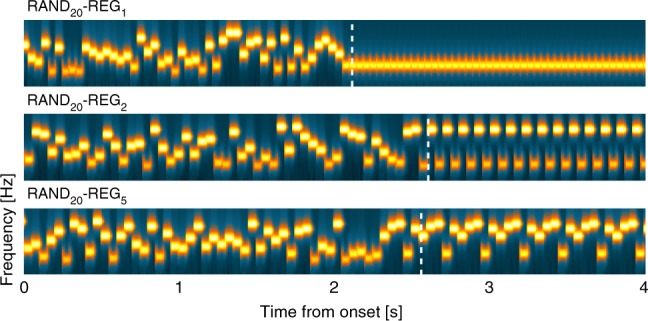Fig. 9.

Example spectrograms for the additional stimuli used in Exp 4A, B. RAND20-REG1 consisted of a transition from a random sequence (generated by sampling frequencies from the full pool with replacement; RAND20) to a single repeating tone. RAND20-REG2 consisted of a transition from a RAND20 sequence to a regular pattern consisting of two randomly selected tones. RAND20-REG5, consisted of a transition from a RAND20 sequence to a regular repeating pattern consisting of 5 tones. Dashed vertical white lines indicate the transition time, defined as occurring after the first full regularity cycle. See also Supplementary Fig. 2 for an information theoretic28 characterization of the stimuli: All transition conditions show a gradual decline in information content (IC) over several tones as the model discovers the predictable structure within the sequence. For presentation purposes the plotted sequence lengths are equal. Actual durations varied randomly between 6 and 7.5 s. In Experiment 4A the stimulus set also contained RAND20-REG10, REG10-RAND20, STEP, REG10, RAND20 and CONST sequences. In Experiment 4B the stimulus set additionally contained RAND20-REG10 and RAND20 sequences
